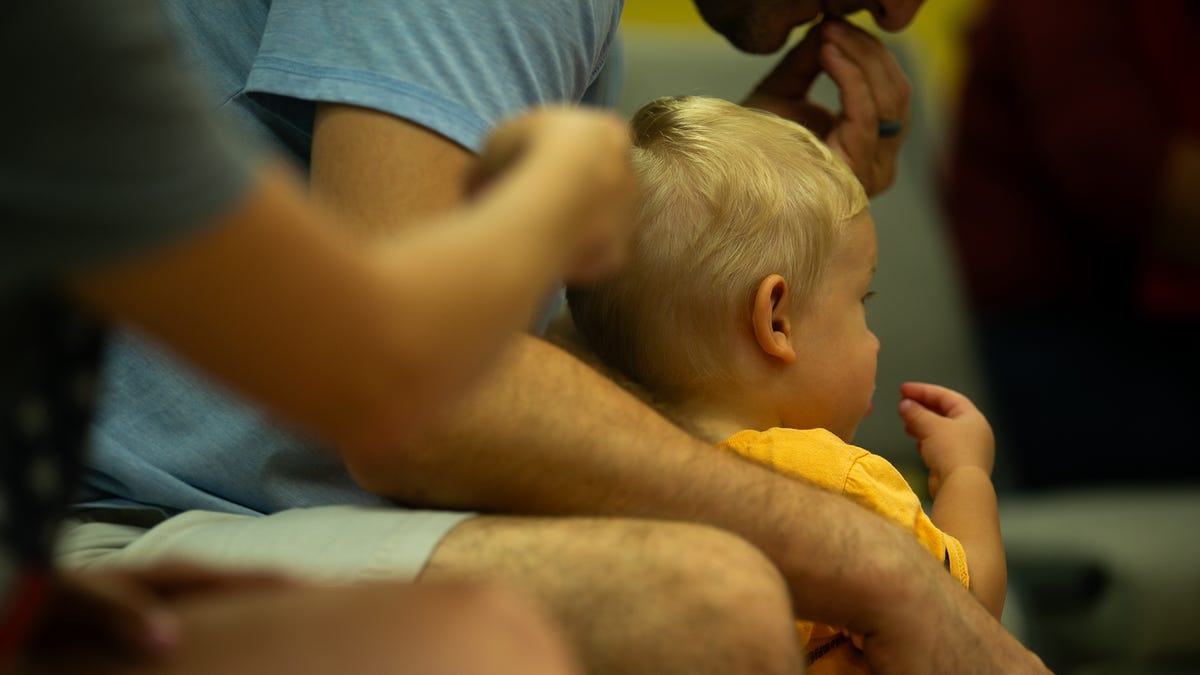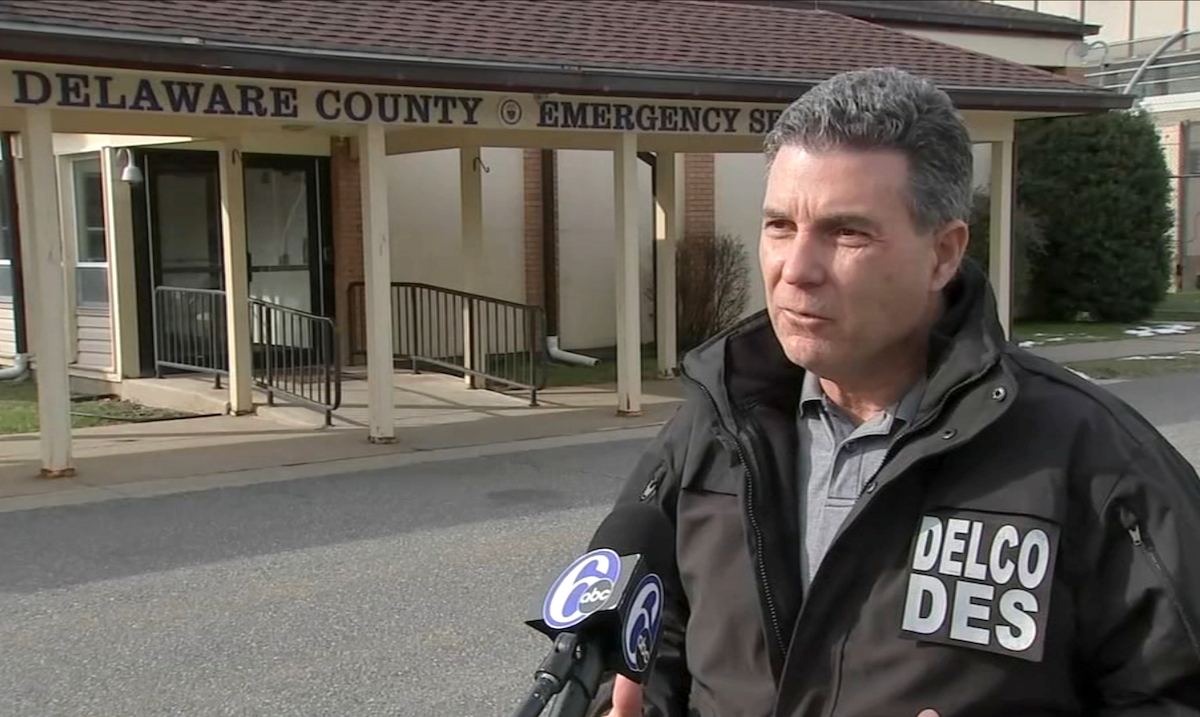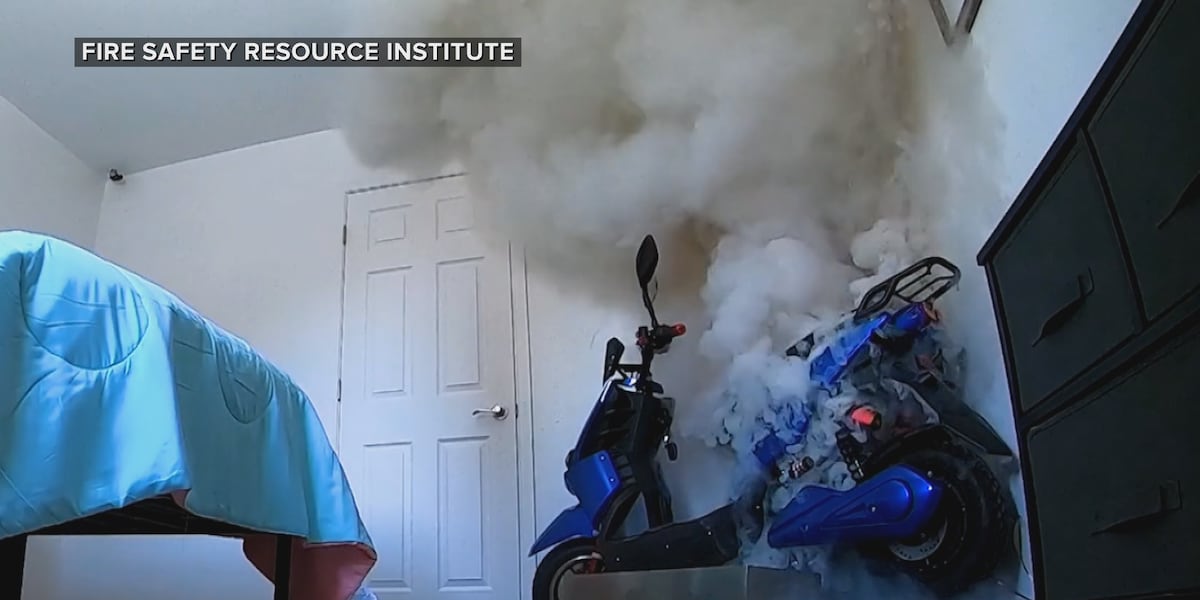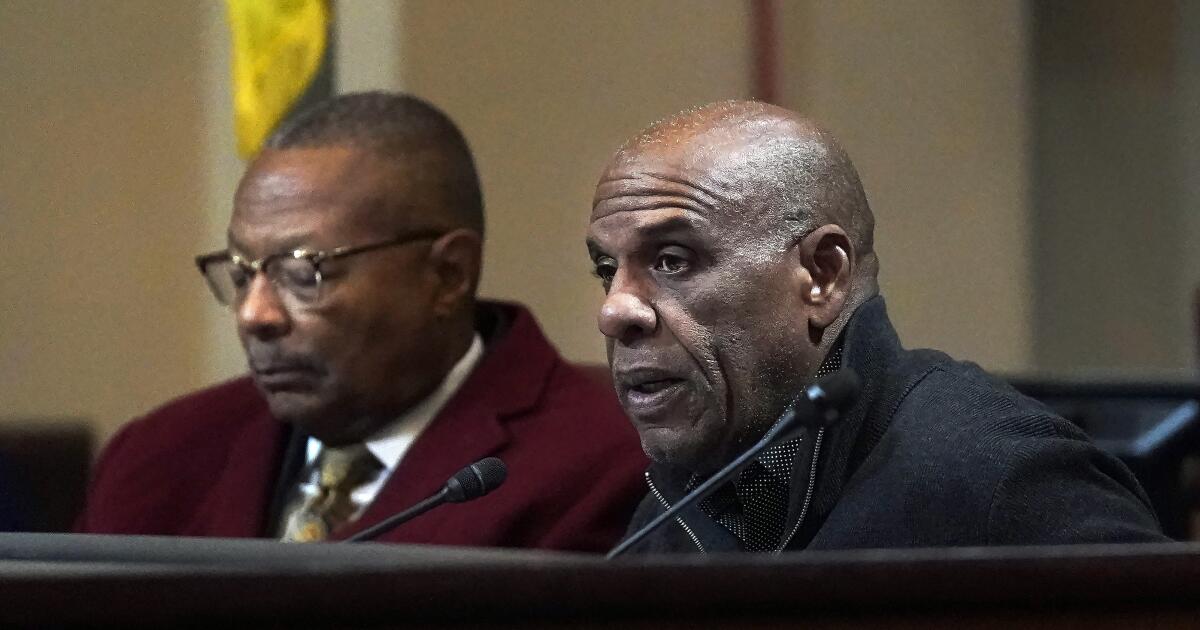Delaware
ACLU-DE reviews complaint amid backlash from deaf, hard-of-hearing community

Americans will soon be able to purchase hearing aids over-the-counter
Millions of Americans will have access to purchase hearing aids over-the-counter under a new FDA rule.
Claire Hardwick, USA TODAY
The ACLU of Delaware levied a formal complaint against Delaware’s Department of Education just before the Christmas holiday — calling for an investigation into “systemic discrimination against deaf and hard-of-hearing youth.”
Filed with the U.S. Department of Education’s Office of Civil Rights, the complaint claims Delaware is violating the Americans with Disabilities Act, while it centered largely on access to “Listening and Spoken Language” therapy. The organization called it the “gold standard” when teaching communication skills to children hard of hearing.
That has received backlash from some of the very people it hoped to empower.
Such backlash from the deaf and hard-of-hearing community is underscored by one petition started Dec. 26 — having gained more than 20,000 signatures over a holiday break. The Delaware Association of the Deaf also said it was “profoundly disturbed and disappointed” by the complaint in a response letter to ACLU-DE. And Language First, a Connecticut-based advocacy organization, wrote an open letter saying the complaint discredits other teaching methods for children, while promoting misconceptions about their language acquisition.
“Reviewing current research findings and practices in Delaware and nationwide, there is no agreed upon ‘gold standard,’ a baseless and ideologically driven claim made in your complaint,” writes the board of Delaware Association of the Deaf. “In fact, countless studies on brain development and language in infants, including Deaf infants, recommend immediate and intensive immersion in a fully accessible natural language, including ASL a natural visual language, as being critical.”
The association said LSL therapy is just one strategy, which should not discount “the documented benefits and role” of visual language or bilingual strategies. The board requested a withdrawal of the complaint entirely.
ACLU-DE hasn’t gone quite that far.
The organization removed its posts about the complaint, however, and cited time needed to review community feedback.
“We’re invested in learning more from this community as we review both our actions and our impact regarding the OCR complaint,” wrote ACLU-DE in a tweet Tuesday. “We’ll be reaching out to community members to discuss the concerns that were shared and ensure that our work does not in any way impede ASL education.”
Original complaint: Students with hearing loss in Delaware face ‘systemic discrimination,’ ACLU-DE claims
‘The question is, gold for whom?’
Concerned advocates echoed these calls to pull the complaint.
Many noted a lack of research supporting LSL therapy over other methods, while also opining that Delaware’s School for the Deaf should not be described as restrictive. ACLU-DE’s complaint claimed the state over-refers to the school.
“Schools for the deaf may very well be the least restrictive environment (LRE) for many DHH children,” writes Language First in its open letter, nodding to similar language from federal law. “Indeed, being educated in an environment where one can have direct and fully accessible communication between their teachers and peers does seem to fit the definition of ‘least restrictive.’”
Reaction is still mixed. Nick Fina, project lead for CHOICES Delaware, a grassroots organization for children with hearing loss, supported the initial complaint, saying such access issues stretch over decades. He also pointed to an upcoming informational event about LSL, set for 7 p.m. Jan. 17.
Sara Nović started her petition late last month.
The author and instructor also wrote a letter to ACLU-DE, she shared on her social media, compiling feedback from over 50 Delaware families. She said the complaint was lodged with “out-of-date and incorrect information about deaf education and signed language,” while it posits LSL as a “gold standard” in deaf education.
“The question is, gold for whom?” she writes in the petition.
“LSL advocacy is still built on this philosophy — that deaf children must assimilate and participate in a veneer of inclusion rather than actually learning — to disastrous effect for deaf kids,” the petition also states.
Nović is the author of the “True Biz” — a New York Times best-seller following a teacher and students at a boarding school for the deaf — as well as an instructor of deaf studies and creative writing, according to her website. The Philadelphia resident continues an open call for more input from Delaware families.
And ACLU-DE is ready to hear from more residents, too.
It shared next steps that are to include “conversations with the deaf and hard of hearing community.” Specific dates or events have not yet been made known.
Do you have a story? Share your perspective with us: kepowers@gannett.com.
Kelly Powers covers race, culture and equity for Delaware Online and USA TODAY Network Northeast, with a focus on education. Contact her at kepowers@gannett.com or (231) 622-2191, and follow her on Twitter @kpowers01.

Delaware
Longtime Del. lawmaker Joe DiPinto remembered as an ‘outstanding person’

DiPinto was first elected to City Council in 1973 before moving up to represent Wilmington in the General Assembly from 1987 to 2006. He returned to city government after leaving Dover, serving as Wilmington’s Director of Economic Development under then-Mayor James Baker, a Democrat.
“Joe knew that this position gave him the opportunity to directly help the people of Wilmington through development agreements that provided jobs for city residents and revenue to support city services,” Baker said. “Joe cared about people regardless of their standing in life, race, religion, or politics. He served the people of Wilmington well.”
“Joe always put Delawareans first and looked to improve the First State,” said U.S. Sen. Chris Coons, who was New Castle County executive while DiPinto was leading the city’s economic development office. “We forged our friendship through civic service at different levels of government.”
DiPinto was also active with a number of cultural groups and other organizations, including Delaware’s Science and Technology Council, the Delaware Commission on Italian Heritage and Culture, the Riverfront Development Corporation, the Greater Wilmington Convention and Visitors Bureau, and the Delaware Science and Technology Commission.
DiPinto was also once a member of WHYY’s board of directors.
Delaware
Former Delaware County emergency services director faces assault, harassment charges

From Delco to Chesco and Montco to Bucks, what about life in Philly’s suburbs do you want WHYY News to cover? Let us know!
The Pennsylvania Office of the Attorney General has filed criminal charges against Delaware County’s former emergency services director Timothy Boyce.
Boyce faces three misdemeanor counts of simple assault, harassment and indecent assault without consent. The charges stem from the same allegations of workplace ageism, discrimination and sexual harassment that led to his May 10 firing.
A preliminary hearing has been scheduled for June 5. Michael S. Dugan, Boyce’s attorney, did not immediately respond to a request for comment. Neither did Boyce.
Boyce was placed on administrative leave on April 25 after two female employees filed complaints with the Equal Employment Opportunity Commission and the Pennsylvania Human Relations Commission, alleging he fostered a hostile work environment.
Delaware
Where is the Delaware River deepest? New map poster shows 113-foot answer

What is the most common shark in florida
On vacation from France, Sandrine Fontaine and her husband, got the memory of a lifetime as they paddled near the coastline.
Sandrine Fontaine
Where is the deepest part of the 330-mile Delaware River? Where it is also widest, where the river meets the Delaware Bay? Try Narrowsburg, New York. A new map has been published showing the mysterious contours of what is called the “Big Eddy Narrows.”
The river, the longest free-flowing river east of the Mississippi, is 113 feet deep at River Mile 290, counting from Delaware Bay, and visible from the bridge connecting Pennsylvania and New York.
The Delaware River’s average depth is only four to five feet, although holes of 12 to 18 feet are not unusual.
A diver with a local search and rescue team said no light penetrates the bottom at all.
Made a map poster
The map is available as an 11-by-17-inch poster that its creator has donated to benefit the non-profit Upper Delaware Council (UDC), announced UDC Executive Director Laurie Ramie.
The map was developed by Lisa Glover of Honesdale, who became enthralled with this unique, local claim to fame of the Delaware River and contacted the UDC.
Although one might muse that the hamlet of Narrowsburg should have been named Deepestburg, its name is derived from its other distinction of being the main stem’s narrowest part. The river courses through a rock canyon before the bridge, where it is only 200 feet wide.
Where to see it
The Big Eddy Observation Deck on Main Street in Narrowsburg has an interpretative sign telling these distinctive topographic features. Here the public also finds a good place to watch for bald eagles as rowboats, canoes, kayaks, and rafts go by.
Perhaps very few people paddling by or on shore looking at this scenic part of the river are aware of the fantastic underwater depth.
This very deep part of the Delaware also is easily seen from the Darbytown Access on the Pennsylvania side.
The interpretative sign at the deck offers two theories of how the 113-foot hole was created. The first is that a long-drowned “plunge pool” was created from a glacial waterfall. The other theory is that a pothole was formed by tumbling rocks scoured out through erosion.
A whirlpool is often visible at the Big Eddy, where the deepest point is located just downstream from the narrows.
Log rafts spun like tops
The deeps at Narrowsburg have been known for a very long time, impacting 19th century log rafters. The Wayne County Herald’s Feb. 20, 1873, edition reported that J.I. Appleby and J.E. Miller, of Narrowsburg, out of curiosity took soundings of the river from a boat. They concluded the river was 101 feet. “Rafts in coming down the Delaware are frequently drawn into this eddy and sometimes detained for days,” the article reads. “Whenever the wind is blowing with any force, rafts are sure to be drawn into this eddy where they have to remain until the wind calms.”
The Herald republished an unattributed column from The Middletown Mercury on Jan. 20, 1881, stating that log rafts caught in the Big Eddy “may spin around like a top for an hour.” Rafts so caught could create a river traffic jam of a hundred rafts. “I have seen 500 rafts in here at one time, some of them on top of each other, and some turned up on edge, and others bottom side up,” the columnist penned.
Extensive research
The UDC press release states that Glover read articles from the UDC’s “The Upper Delaware” newsletter which led her to interviews with National Park Service divers who had measured the hole. Glover also found various illustrations.
She spoke of her desire for an accurately detailed map of the river bottom with the hope of potentially solving the mystery. Although topographic maps exist showing the elevation of landforms above “sea level,” bathymetric maps show depths of landforms below water.
Glover, in her research, discovered that the U.S. Geological Survey (USGS) had published a LiDAR scan of the Delaware River in 2020 and reached research scientist John Young, who provided a digital map focused on the Big Eddy section, the press release states.
Obtaining a map
From her research, Glover designed a topobathymetric color map with 10-foot contour lines and to-scale cross sections of The Narrows and The Deeps, printed 50 copies, and offered a stack to the UDC to share with the public as a fundraiser.
The Big Eddy Narrows poster is available for a $20 donation to the UDC.
Contact Administrative Support Stephanie Driscoll at stephanie@upperdelawarecouncil.org or 845-252-3022, or stop by the UDC’s office at 211 Bridge St. in Narrowsburg (next to the firehouse) on weekdays for pick-up.
Payment must be by check or cash. Add $3 for mail orders.
Glover is affiliated with Highlights for Children, the Stourbridge Project, the Wayne County Arts Alliance and the Center on Rural Innovation, for which she is their Placemaking Fellow.
She holds a bachelor’s degree in architecture and a master of engineering degree from Lehigh University and likes to use a paddle board. Her website is lisathemaker.com.
Peter Becker has worked at the Tri-County Independent or its predecessor publications since 1994. Reach him at pbecker@tricountyindependent.com or 570-253-3055 ext. 1588.
-

 Politics1 week ago
Politics1 week ago'You need to stop': Gov. Noem lashes out during heated interview over book anecdote about killing dog
-

 News1 week ago
News1 week agoMan, 75, confesses to killing wife in hospital because he couldn’t afford her care, court documents say
-

 Politics1 week ago
Politics1 week agoRFK Jr said a worm ate part of his brain and died in his head
-

 World1 week ago
World1 week agoPentagon chief confirms US pause on weapons shipment to Israel
-

 Politics1 week ago
Politics1 week agoHere's what GOP rebels want from Johnson amid threats to oust him from speakership
-

 World1 week ago
World1 week agoPro-Palestine protests: How some universities reached deals with students
-

 World1 week ago
World1 week agoConvicted MEP's expense claims must be published: EU court
-

 Politics1 week ago
Politics1 week agoCalifornia Gov Gavin Newsom roasted over video promoting state's ‘record’ tourism: ‘Smoke and mirrors’



















